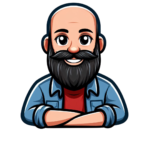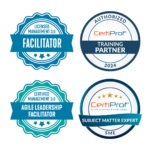Introdução
Neste artigo, vou falar sobre como foi conduzir a prática Moving Motivators no Biopark, com o objetivo de lidar com conflitos e melhorar o engajamento da equipe.
Contexto da Equipe
Esta equipe era composta por 8 pessoas que, além de funcionários do Biopark, eram estudantes de um curso de gestão de projetos. Eles tinham o desafio de desenvolver duas soluções em sistemas relacionados à logística e investimentos. Eles trabalharam juntos por quase 1 ano para criar essas duas soluções. Enfrentaram desafios relacionados ao engajamento entre si e à compreensão do negócio, enquanto equilibravam o tempo aprendendo a arte da gestão de projetos. Gradualmente, introduzimos conteúdo relacionado à agilidade e o Management 3.0 sempre foi uma referência, principalmente para melhorar o aspecto comportamental entre eles como equipe. Conforme o desenvolvimento dos projetos avançava, implementamos mais práticas de gestão de projetos, Management 3.0 e comportamentais, sempre visando melhorar a qualidade do trabalho da equipe, em termos de técnica e comportamento.
Explicação da Prática
Esta prática tem como objetivo entender o que nos motiva diariamente e como esses motivadores afetam nossas decisões. Os motivadores utilizados foram Relacionamento, Status, Curiosidade, Aceitação, Metas, Honra, Maestria, Liberdade, Ordem e Poder.
Claro, isso é uma sugestão e orientação, dos principais motivadores humanos no trabalho. Cada um pode adicionar alguma motivação extra, mas mantê-la o mais genérica possível é interessante.
Por que decidi usar esta prática?
Recebi relatos de conflitos na equipe que poderiam estar relacionados às motivações das pessoas. Eles têm perfis muito diferentes.
Com a prática, a expectativa seria identificar os motivadores individuais e a média da equipe e entender como cada pessoa contribui para esta equipe.
Como usei esta prática?
Como a equipe estava remota, tivemos uma reunião onde expliquei a prática e sua importância para o autoconhecimento, sinergia da equipe e direcionamento das decisões que as equipes estavam enfrentando no trabalho.
Com um modelo no Excel, pedi a cada um que o preenchesse individualmente, enviando os arquivos para meu e-mail.

Modelo do Excel usado pela equipe
Recebi os documentos e continuei a prática, onde todos foram instruídos a compartilhar e explicar os pontos principais. Para deixar o motivador positivo ou negativo, o contexto solicitado foi o trabalho na empresa Biopark, já que o trabalho lá afetava cada um dos motivadores.
Como a prática foi realizada após o Mapa Pessoal, foi muito interessante ver que refletia as opiniões e a vida que as pessoas apresentaram no Mapa Pessoal, mas também notamos muitas diferenças entre as pessoas. Alguns estavam muito preocupados com a Liberdade, enquanto outros preferiam o Status.
Apesar disso, ao gerar a média da equipe, vimos que os motivadores, de modo geral, estavam próximos, mostrando à equipe que, no final das contas, todos estavam buscando as mesmas coisas, com objetivos semelhantes, e que não havia motivo para tantos conflitos.
Também foi interessante perceber que pessoas que eram opostas no trabalho tinham motivadores muito similares. Acredito que isso ajudará a unir essas pessoas, afinal, saber que o colega de equipe tem as mesmas preocupações melhora a sinergia e a convivência.
Minhas aprendizagens como facilitador
Foi muito valioso, pois a equipe tinha perfis muito diferentes, tanto em termos de experiência quanto de idade. Foi interessante notar as mudanças nos motivadores de acordo com o contexto de cada um, mas todos tinham uma sinergia que não conheciam.
Foi uma ótima oportunidade para revisar a compreensão da prática, reforçando como ela pode ser usada para a resolução de conflitos.
Próximos Experimentos com Esta Prática
Sempre tento explicar aos participantes o propósito da prática e como eles podem usá-la. Para um futuro experimento em um contexto semelhante, após entender e debater as motivações com o Moving Motivators, algo que acredito que funcionaria bem seria criar a
Matriz de Competências da Equipe para unir as informações coletadas, dessa forma, ao conhecer as motivações, entenderemos melhor como trabalhar as competências (soft e hard) dos participantes no processo. Depois de um tempo, sugiro repetir a aplicação do Moving Motivators para entender como suas ações direcionadas ao indivíduo afetaram (positiva ou negativamente) cada motivador.
Referências:
Artigo elaborado como parte do processo para a certificação Management 3.0 Practitioner
Article was written as part of the Management 3.0 Practitioner certification process




